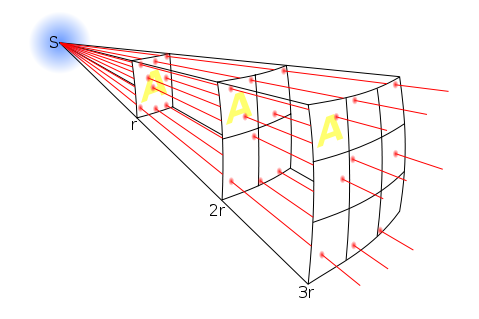I am not sure if I had mentioned this before, but I intend on keeping the mathematics to a minimum, even though it is unavoidable at times. My goal is to convey to you the concepts and ideas intuitively and not just through equations and derivations. This scroll will be short and dense, with very interesting findings at the end when we put the theory to test.
By the end of this part we will have a model of the habitable zone of my solar system by finding estimates on surface temperatures, we will choose together which planet we want to travel to and find out how close does a satellite need to be to detect the planet we want to land on. One more thing! We will calculate how large our solar panels need to be to help us land on our desired planet!!
This scroll will be devoted to introduction. let's go!
The average temperature of the surface of Jupiter is 145 K. But let me ask you this: How do you think we know? Did we go with a thermometer and got a read? Did we send something/someone there to get the job done? None of the above. We can calculate the temperature of a planet if we know how far it is from the star it orbits, the radius of the star and the star's surface temperature (which can be found using Wien's displacement law).

But we can't do anything of the above if we do not assume that the planets and the star are black bodies. I will forgive you if you scoff right now and think "what the hell is this guy talking about, the sun and Jupiter are not black. ", you're right they're not, but hold that thought. What makes a white t-shirt, white? It reflects all wavelengths (or colors if you will) of light. Now what makes a color black t-shirt, black? It absorbs all wavelengths and reflects nothing back, that's why black clothes in summer make you feel hotter. Did you get the hint? A black body is just an astronomical body that absorbs all the electromagnetic waves hurled at it.
To calculate temperature and other more interesting stuff we have to introduce some new concepts you most likely have never heard of. Don't get overwhelmed, I know it's new but open your mind. As usual I will not derive these equations, as they are all found here)
Two concepts and one law. Flux, luminosity and the Stefan-Boltzmann law. We start with flux. Imagine a person has a ball gun, that is a gun that shoots a constant huge number of balls equally in all directions of the gun's (rather large) barrel.

The amount of balls that pass the inner circle per time per area is the flux. Think of it like car speeds, 100 km/h for example is how many kilometers per hour, when we multiply a speed with a time, we get the distance. In our case we get how much energy is passing through a specific area and a specific amount of time, or how many balls are passing that section A (Figure above) per second for example. It's nothing but the measure of energy going through a surface in so so much time. Writing it in mathematics language:
\(F= \dfrac {\mathrm{d}E}{\mathrm{d}A\ \mathrm{d}t}\)
If you replace the person with the sun, and replace the tiny balls with light rays (photons), you'll understand what I'm attempting to explain. Another thing you may notice is, an equal amount of small balls pass in each equal arc length of the same circle per unit time. You can also notice that the same arc length in a farther circle will give us less balls because they will spread out more per unit length. The figure below illustrates that point, and other things as well that go beyond the scope of this scroll.

Another concept is luminosity

What makes all these stars shine for you? The reason stars emit light is because they're extremely hot, and what do we know about extremely hot things? They usually glow and release all that energy somehow, in our case they release their energy by emitting light, like really bright light with a lot of other bad radiation that could kill us. So if we want to know how a bright a star is, we can use the amount of energy it releases as a measure. We can measure how much energy a star has, but does that really help us? Not exactly, we need to know how much energy is released per unit time for it to make more sense. Well the measure of how much energy, in our case in the form of light energy, is released per unit time in other words, Luminosity. By the way when you hear people saying per unit time (or distance or area or whatever) don't let that scare you, just insert your favorite time unit and it should look less intimidating (Watt per second). We can thus write out luminosity as such:
\(L = \dfrac{\mathrm{d}E} {\mathrm{d}t}\)
Look further up in the scroll and recall the expression for Flux \(F\), do you see how luminosity and flux are related? Flux can be rewritten:
\(F = \dfrac{L}{\mathrm{d}A}\)
With all the tools available to us now we can take a look at Stefan-Boltzmann law
\(F = \sigma T^4\)
The flux of a black body is proportional to the temperature to the fourth power. Constant \(\sigma\) is called the Stefan-Boltzmann constant. One very important detail implicit in this expression is that at the very surface we get this amount of flux.
Another expression that follows from our reasoning is the following:
\(F= \dfrac {L}{4 \pi r^2}\)
The total flux F is linearly proportional to the distance r away from the body emitting the flux. Another way to think of it just replacing the dA with the surface area of a sphere with radius r. Try to find out yourself where the expression comes from, deriving equations yourself is really satisfying.
So to model the habitable zone within my solar system, I will use the equations above to estimate planet temperatures under the assumption that they are black bodies, if a black body receives \(F_1\) it will emit \(F_2\), for the sake of simplicity we'll assume that the net flow of energy is zero (energy coming in = energy coming out), so \(F_1 = F_2\). We can calculate the flux coming in by using Stefan-Boltzmann law and flux as a function of distance, I will go one step further with my data and model planet temperature as a function of time analytically, and take the average of the temperature oscillations.
That's most of the theory we need in this part, now I shall present some relevant observations (data)
| Body | \(\approx\)Radius (km) | Average Surface Temperature (K) | Distance from the sun (AU) |
|---|---|---|---|
| My sun | 478 693 | 4 498.79 | 0 |
| Your sun | 696 340 | 5 778 | 0 |
| Earth | 6 371 | 288 | 1 |
| Planet 0 | 9 428 | - | 0.299162 |
| Planet 1 | 5 717 | - | 0.436008 |
| Planet 2 | 1 209 | - | 1.74548 |
| Planet 3 | 50 354 | - | 2.57774 |
| Planet 4 | 3 718 | - | 0.117936 |
| Planet 5 | 4 149 | - | 0.656736 |
| Planet 6 | 3 899 | - | 1.00059 |
| Planet 7 | 17 541 | - | 3.42128 |
By the end of this part, we will have filled in the data for the blank spots. Important: the data presented in the table is approximated and meant to just put things in perspective.
Join me here to be a step closer to estimating the planets' temperatures without ever stepping foot or even getting close to them
